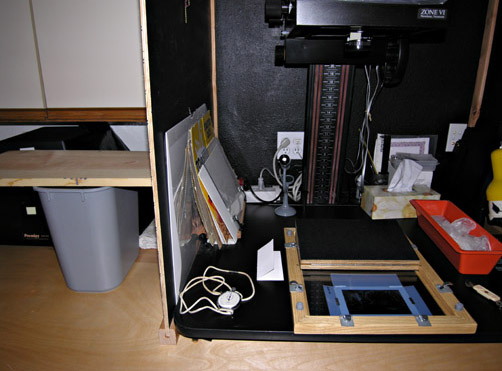
The early photographers were onto something. Contact printing couldn't be easier. Ignore the enlarger! Sandwich paper with negative in a contact printing frame and stick it under a light bulb. I am currently using a 75-watt halogen flood set 4 ft from the paper. The board on a wastepaper can is the "printing table". I time with a stopwatch. I orient the negative to fit on the emulsion with room enough to spare to use the beautiful black emulsion as a border. Celebrate the process.
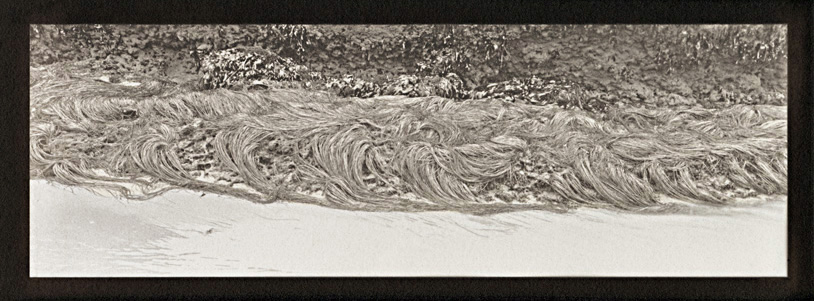
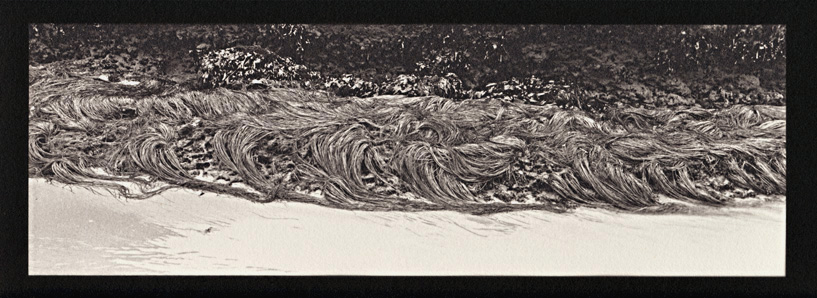
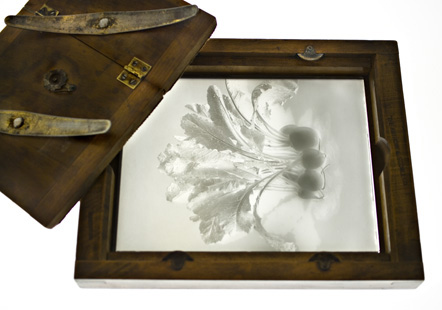
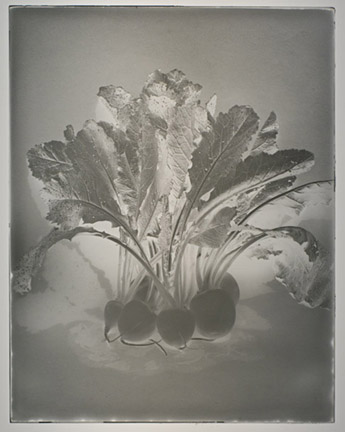

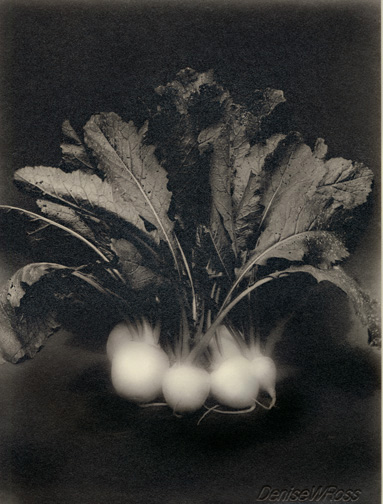
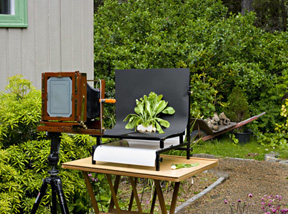
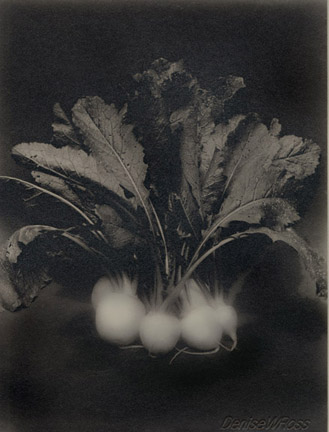
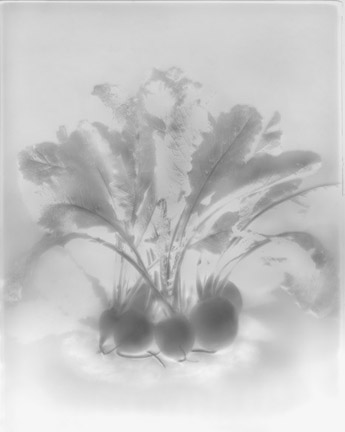
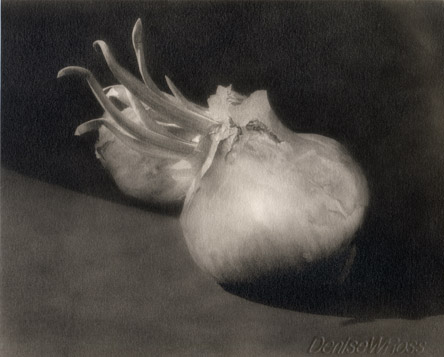 Even
simpler, for images that need only a little help, is to make an
old-fashioned mask. To print this 5"x7" plate, I simply laid a
piece of tracing paper on the glass and made a smudge of density with a
soft graphite pencil over the center of the bulb — just enough to bump
the highlights. I could have dodged the area during exposure, but
masks make a print easily repeatable.
Even
simpler, for images that need only a little help, is to make an
old-fashioned mask. To print this 5"x7" plate, I simply laid a
piece of tracing paper on the glass and made a smudge of density with a
soft graphite pencil over the center of the bulb — just enough to bump
the highlights. I could have dodged the area during exposure, but
masks make a print easily repeatable.